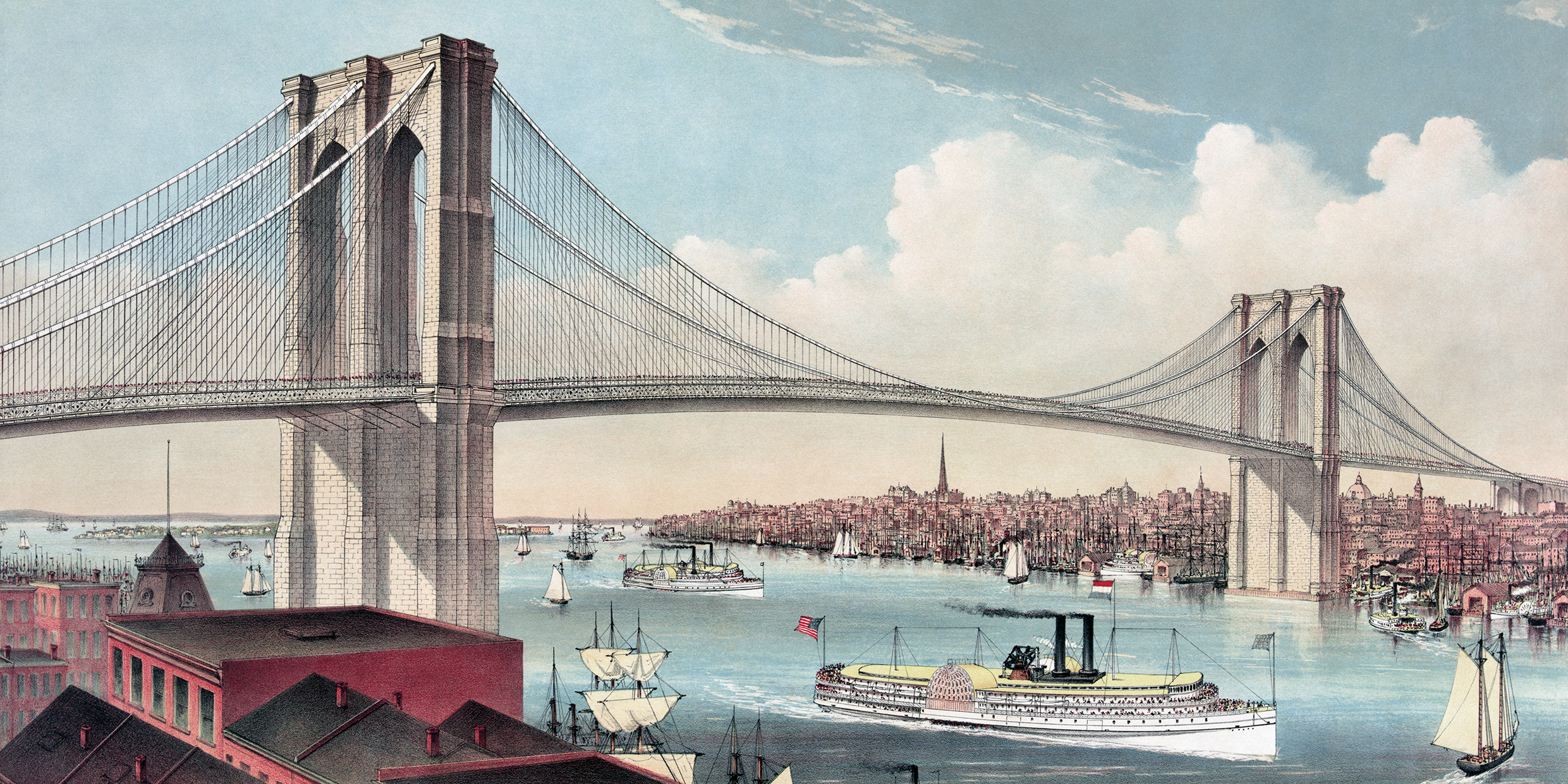Originally published 9 May 1988
New York’s bridges are falling down.
According to a [1988] report in the New York Times, about a third of the city’s two thousand bridges are considered to be structurally deficient. More than thirty have been closed to traffic. The problem is poor maintenance. Apparently the city has neither the money nor the will to keep the bridges in repair.
The issue came to a head several weeks ago with the dramatic closing of the 85-year-old Williamsburg Bridge, the second oldest of the city’s major bridges and a vital road and rail link between Manhattan and Brooklyn. Transportation between the two boroughs has been severely disrupted.
The week they closed the Williamsburg Bridge, I found myself walking across the Brooklyn Bridge, the oldest of New York’s bridges, and the only one of the three East River suspension bridges in reasonably good health. The walk was the fulfillment of a lifelong ambition to see close-up the structure that more than any other in North America epitomizes the Golden Age of civil engineering.
The Brooklyn Bridge is more than a link between two shores. From the moment it was opened to traffic in 1883, it has been a unique symbol of the American spirit. Even today, in a city a spectacular bridges, tunnels, and skyscrapers, the Brooklyn Bridge continues to stir the mind and heart like no other work of engineering.
Like crossing a rainbow
The power of the bridge is not the power of scale, although the scale is certainly grand. A walk across the bridge on a fine day is like crossing a rainbow cast over a great city. Even the towers of the World Trade Center, not far from the Manhattan terminus of the bridge, seem somehow smaller. Looking down from the bridge on the restored 19th century buildings of Southport — New York’s equivalent of Boston’s Quincy Market — one gets a sense of what the view from the bridge must have been like in 1883, when the massive granite towers that support the suspension cables were the tallest structures in the city, excepting only the tip of the spire of Trinity Church.
It was a time of extraordinary achievements in civil engineering. In the previous decade-and-a-half, the continent had been spanned by a railroad, a three-arched bridge was thrown across the Mississippi at St. Louis, and a 5‑mile-long railroad tunnel was driven through Hoosac Mountain in Massachusetts. From coast to coast the nation was being bound together by great works of steel and stone.
These works were public structures, emblems of civic pride, enhancing the movements of people, speeding communication, and generating national wealth. And the civil engineers who built these wonders stand out in our history books like minor gods. Foremost among them were those complex and difficult geniuses, John and Washington Roebling, father and son, architect and builder of the Brooklyn Bridge.
With the Brooklyn Bridge, the glory days of American civil engineering reached their apogee. From that moment forward, the thrust of history was away from communal enterprises and toward the material enrichment of individuals. The next great wave of inventor-engineers — Edison, Ford, Bell — were creators of goods for private consumption. In our own century, works of public engineering have come to be taken for granted.
What we were — and have become
Almost uniquely, the Brooklyn Bridge continues to cast its spell. It has long since ceased to be the biggest bridge in New York. The Verrazano Narrows Bridge has more than twice the span and towers twice as high. Some might even say that the Verrazano is the more beautiful bridge. Still, my long-anticipated walk across the Brooklyn Bridge had all of the magic I expected that it might. What I experienced was not so much a sense of physical awe, as a sense of history — of what we once were and what we have become.
At the center of the pedestrian promenade, one can reach out one’s hand and touch the 16-inch thick cables that support the structure. The manufacture of steel cables made the Roebling family rich. But the massing of wealth is not what drove John and Washington Roebling in the conception and execution of their great project. Both men recognized that their bridge was an instrument for serving the national destiny. Both men suffered grievously (John Roebling lost his life) in the completion of the work.
As its name suggests, civil engineering is engineering in the service of the common weal. If you want to know how civil engineering fares today, ask the students who are embarking upon engineering careers. Civil engineering has fallen low in their esteem. The most glamorous fields of engineering are those that produce goods for private consumption.
The Statue of Liberty and the Brooklyn Bridge stand at the gateway of the nation as two symbols of the American spirit. The one celebrates personal freedom; the other celebrates the exercise of that freedom for the public good. Perhaps a third of New York’s bridges are falling down because we have forgotten the meaning of one of the two symbolic structures in New York Harbor.



